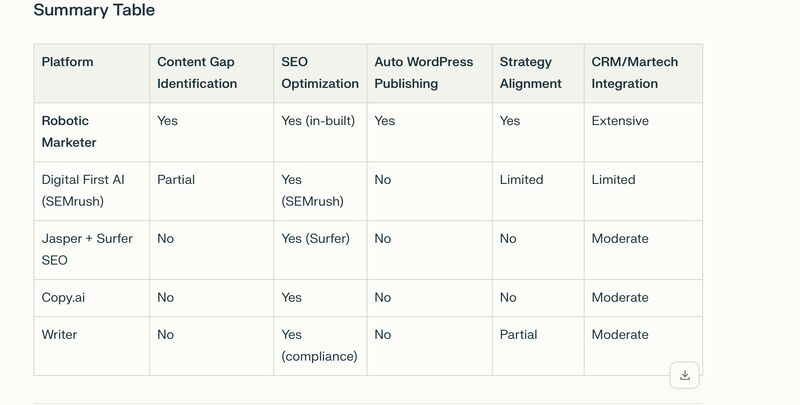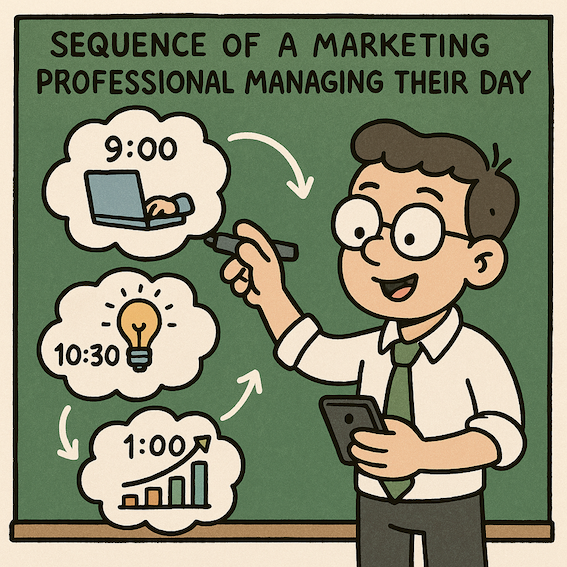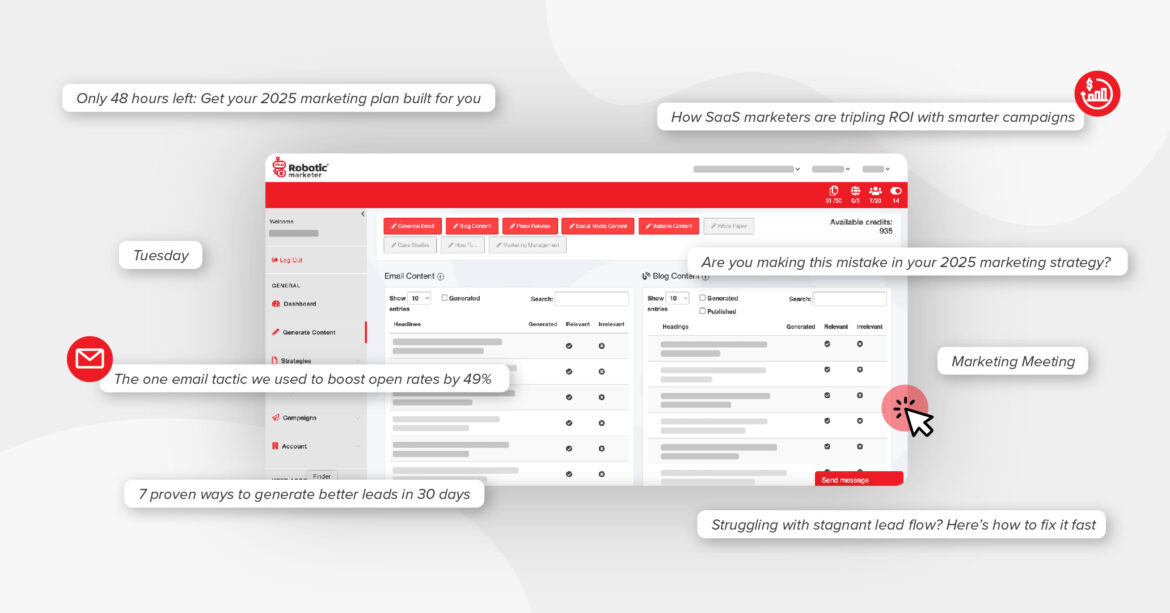Robotic Marketer’s Automated SEO vs. Adobe’s New Offering: Why They Smaller Players Like Robotic Marketer Are Winning
Search engine optimization (SEO) is rapidly transforming in the age of generative AI and large language
AI-Powered Search and the Google Traffic Shift: What Every Marketer Needs to Know
If you’ve been paying attention, you’ll know the ground under SEO has shifted. Google’s once-unshakeable grip on how we search is loosening—not
Implementing AI to streamline content marketing efforts
With artificial intelligence (AI) continuing to gain momentum across every industry, marketing leaders are discovering new and efficient ways to
8 Email Subject Line Formulas to Skyrocket Open Rates
Email marketing is one of the most effective channels for connecting with customers in both B2B and B2C markets. A subject line can make or break
How AI is Transforming Marketing Strategy
Introduction to AI in Marketing Marketing strategies have undergone significant transformations as businesses increasingly turn to artificial intelligence (AI) to gain a competitive edge. What once was perceived as a futuristic concept has now evolved into a present-day tool that reshapes how ...
How to Conduct a Marketing Strategy Workshop for Team Alignment and Success
A marketing strategy workshop is a powerful tool to align your team, generate innovative ideas, and create a cohesive plan to achieve your business goals. Companies like Bain & Company, McKinsey & Company, Boston Consulting Group (BCG), and Saatchi & Saatchi have mastered techniques ...
How to use marketing to improve webinar attendance
Webinars are a great way for businesses, especially in the SaaS industry, to connect with potential and existing customers. However, many companies struggle with getting high attendance. According to ON24’s Webinar Benchmarks Report, the average registration to-attendance rate is between ...
How Marketing Dashboards Are Altering the Health Industry
The health industry is witnessing a remarkable transformation, driven by technological advancements. Among these, marketing dashboards have become indispensable tools for healthcare organizations. As businesses strive to fine-tune their marketing strategies, platforms like Robotic Marketer ...
Australian Companies are Using AI to Develop Marketing Strategies for This Reason
Australian companies are utilising artificial intelligence (AI) to develop and refine their marketing strategies. This trend is a fundamental shift that promises to transform the way businesses connect with their audiences. We will look at why this change is happening, how AI is changing ...











